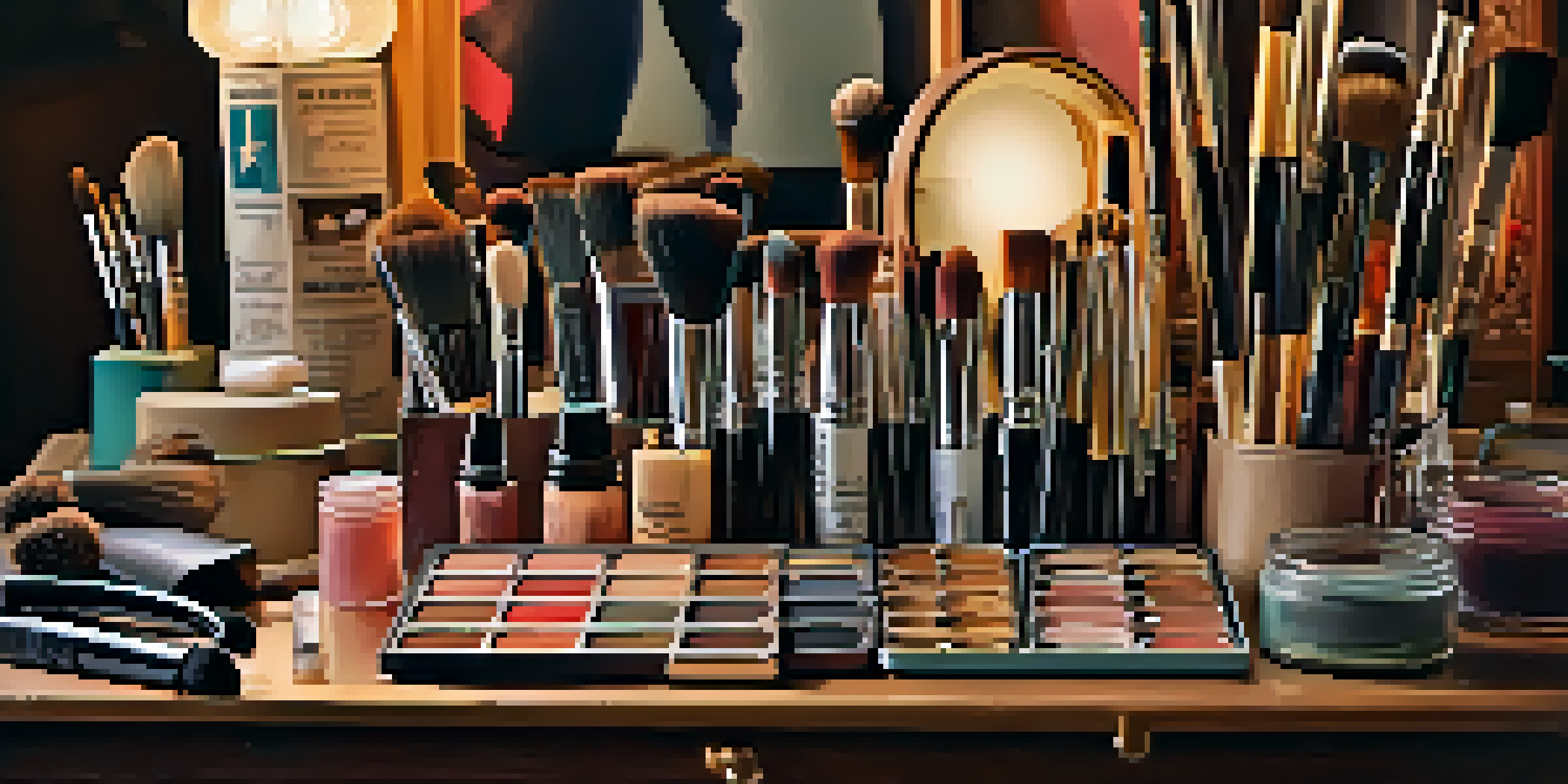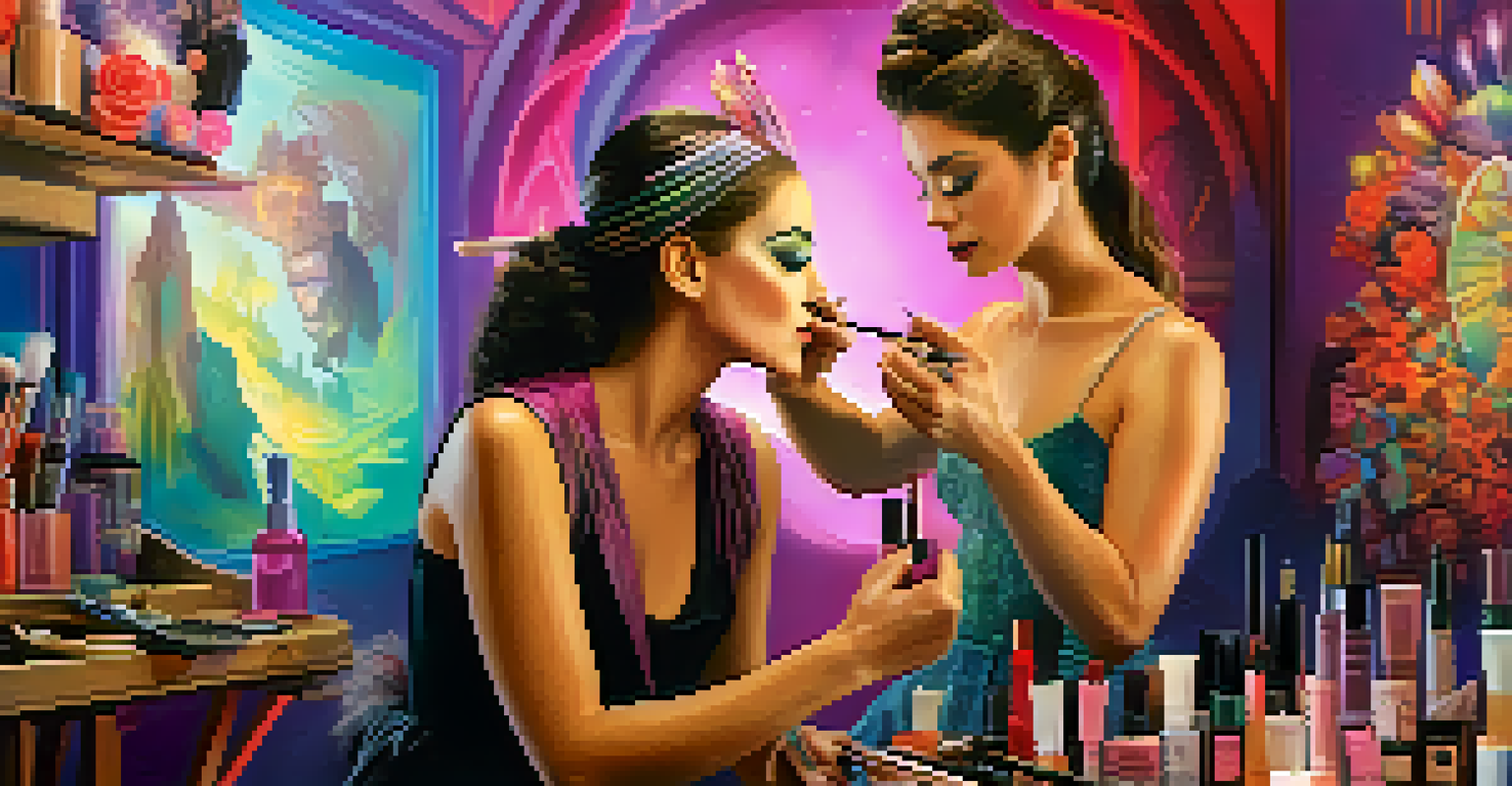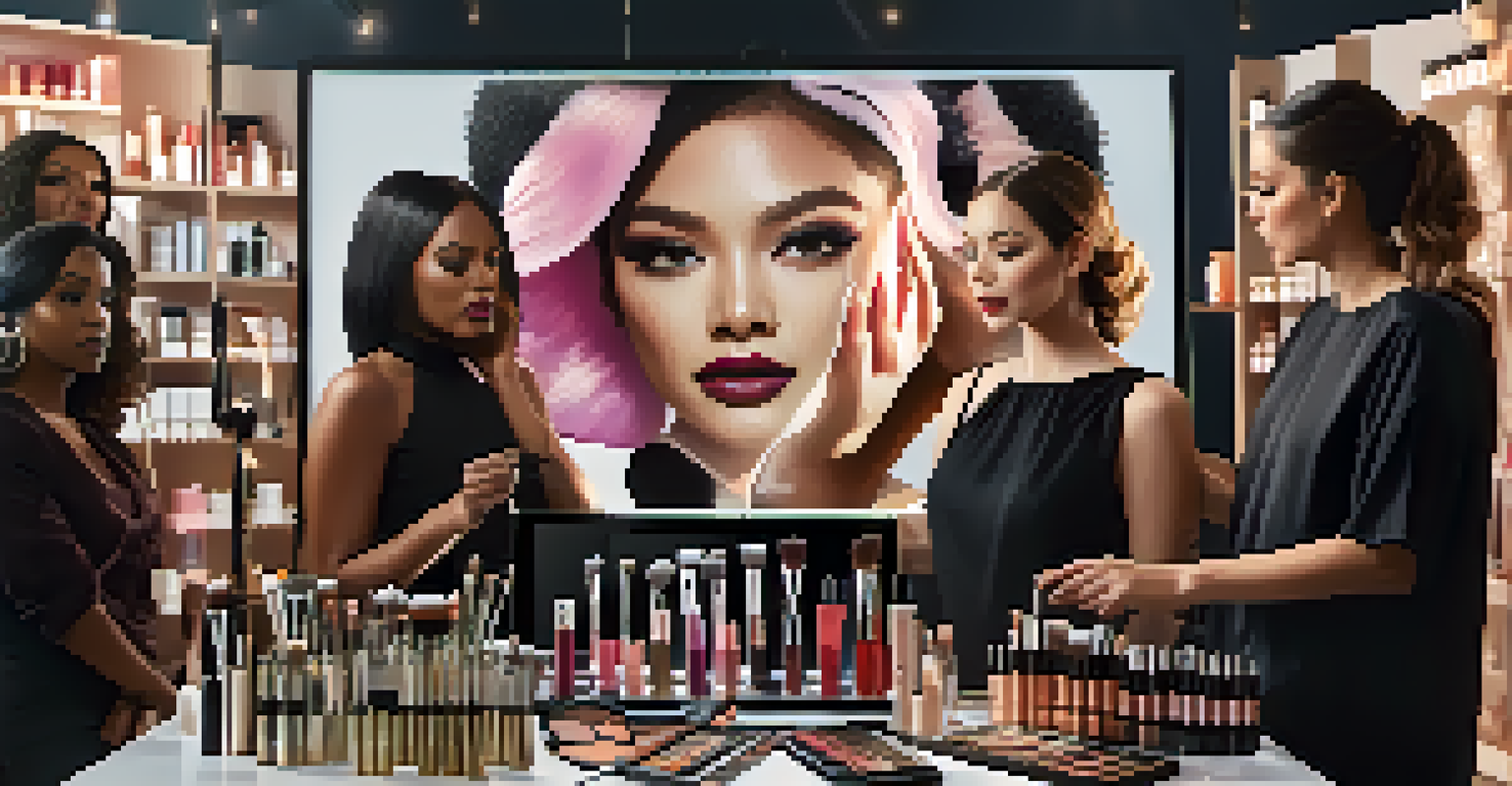The Evolution of Make-Up Effects in Hollywood Cinema

The Birth of Make-Up Effects: Early Cinema
In the early days of cinema, make-up was a crucial tool for actors to appear larger than life on screen. Simple techniques like face paint and exaggerated features helped convey emotions and characters in silent films. For example, the iconic use of white face paint by actors like Lon Chaney in 'The Phantom of the Opera' set the stage for the importance of visual storytelling through make-up.
Make-up is not just a tool for beauty; it is a vital part of storytelling that allows characters to undergo dramatic changes.
As films transitioned to talkies, the role of make-up evolved, becoming more sophisticated. The introduction of new materials allowed make-up artists to experiment with aging techniques and realistic textures. This era marked the beginning of the collaboration between actors and make-up artists, leading to more immersive character portrayals.
Additionally, the 1930s saw the rise of horror films, which pushed the boundaries of make-up effects. Creatures like Frankenstein's monster and Dracula required innovative make-up solutions, leading to the development of latex and other materials that would define the genre.
The Golden Age: Innovation and Iconic Looks
The 1950s and 60s are often referred to as the golden age of Hollywood make-up effects, where creativity exploded. Iconic looks such as Marilyn Monroe's glamorous style and the dramatic transformations in films like 'The Wizard of Oz' showcased the make-up artist's artistry. The ability to create fantasy and allure became central to film marketing and audience engagement.

During this time, make-up artists like Max Factor and Ben Nye gained fame for their revolutionary techniques. They introduced products that not only enhanced beauty but also allowed for more complex transformations, making actors unrecognizable for their roles. This era laid the groundwork for future innovations in special effects.
Evolution of Make-Up in Cinema
Make-up effects have transformed from simple face paint in early films to complex digital enhancements, reflecting the evolving storytelling in cinema.
The introduction of Technicolor also played a significant role in the evolution of make-up. Artists had to adapt their palettes to vibrant colors, ensuring that looks matched the vivid cinematography that audiences were experiencing. This synergy between color and make-up elevated the visual storytelling in film.
The Advent of Special Effects: A New Frontier
As technology advanced in the 1970s and 80s, make-up effects began to overlap with special effects, creating a new frontier in cinema. Films like 'Star Wars' and 'Alien' introduced groundbreaking techniques, combining practical make-up with animatronics and miniatures. These innovations allowed for more realistic creatures and environments, captivating audiences worldwide.
Every great film begins with a vision, and make-up effects play a crucial role in bringing that vision to life.
The 1980s saw the emergence of iconic make-up effects artists like Rick Baker and Tom Savini, who pushed the limits of creativity. Baker's work on 'An American Werewolf in London' showcased the art of transformation, with revolutionary make-up applications that won him an Academy Award. Such achievements highlighted the importance of skilled artists in the film industry.
Moreover, this era marked the beginning of a shift in how audiences viewed make-up. Instead of just being a tool for beauty, it became a vital part of storytelling, allowing characters to undergo dramatic changes that enhanced the narrative. The integration of make-up and special effects became a hallmark of the era.
Digital Effects: The Era of CGI
With the turn of the millennium, the rise of computer-generated imagery (CGI) began to change the landscape of make-up effects. Films like 'Jurassic Park' and 'The Matrix' showcased how digital technology could create stunning visuals that were previously unimaginable. However, this shift also sparked debates about the role of traditional make-up effects.
Despite the emergence of CGI, many filmmakers realized that practical effects still held significant value. Blending traditional make-up with digital enhancements became a popular approach, allowing for more realistic and immersive experiences. This hybrid technique helped maintain the integrity of character portrayals while embracing modern technology.
Diversity and Authenticity in Art
There is a growing emphasis on diversity and representation in make-up effects, leading to more authentic character portrayals that resonate with audiences.
Moreover, the resurgence of interest in practical effects can be seen in films such as 'Mad Max: Fury Road,' where the combination of make-up artistry and CGI created a unique visual style. This blend of old and new has allowed make-up artists to showcase their talents while still embracing innovation.
The Role of Diversity in Modern Make-Up Effects
In recent years, there has been a significant push towards diversity and representation in Hollywood, influencing make-up effects as well. Artists are now more aware of the importance of creating looks that reflect a wide range of cultures and identities. This evolution has led to more nuanced portrayals of characters that resonate with diverse audiences.
Additionally, the demand for authenticity has prompted make-up artists to explore traditional techniques and styles from various cultures. This not only enriches the storytelling but also promotes a greater appreciation for the art of make-up across different backgrounds. Films like 'Black Panther' showcased the beauty of cultural representation through elaborate make-up and design.
As the industry continues to evolve, the focus on inclusivity in make-up effects is becoming a crucial aspect of filmmaking. This shift not only empowers artists but also fosters a more authentic connection between the audience and the stories being told.
The Future: Trends and Innovations in Make-Up Effects
Looking ahead, the future of make-up effects in Hollywood is poised for exciting changes. Advances in technology, such as augmented reality (AR) and virtual reality (VR), are beginning to influence how make-up artists create and visualize effects. These tools offer new possibilities for artists to experiment and showcase their creativity in ways that were previously unimaginable.
Moreover, the demand for sustainability within the industry is growing, pushing artists to seek eco-friendly materials and practices. As audiences become more environmentally conscious, make-up artists are adapting by creating products and techniques that minimize waste and environmental impact. This shift reflects a larger trend towards responsible filmmaking.
Future Trends in Make-Up Effects
The future of make-up effects is shaped by technological advancements and sustainability efforts, allowing artists to innovate while being environmentally conscious.
Lastly, the integration of social media platforms has transformed how make-up artists share their work, allowing for real-time feedback and collaboration. This has created a vibrant community of artists who inspire and challenge each other, further pushing the boundaries of what can be achieved in make-up effects.
Conclusion: The Legacy of Make-Up Effects in Cinema
The evolution of make-up effects in Hollywood cinema is a testament to the creativity and innovation of artists throughout the years. From simple face paint in silent films to the complex digital effects of today, the journey reflects the changing landscape of storytelling. Make-up effects have not only enhanced character portrayals but have also become a vital part of cinematic history.
As we look to the future, the interplay between technology, diversity, and sustainability will continue to shape the art of make-up effects. The commitment to pushing boundaries and exploring new techniques ensures that this art form will thrive for generations to come. After all, every great film begins with a vision, and make-up effects play a crucial role in bringing that vision to life.

Ultimately, the legacy of make-up effects in cinema is one of collaboration, innovation, and artistic expression. As audiences continue to engage with stories on screen, the impact of make-up effects will only grow, reminding us of the magic that happens when creativity meets technology.